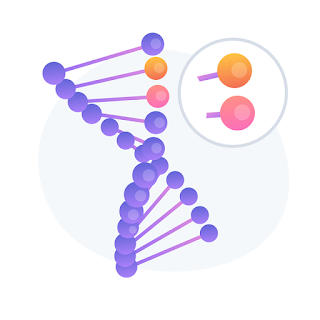Improved Diagnostic and Early Prevention Techniques | BioAro
The world of science and medicine is based on a process of
continuous research and development. Each discovery helps us enhance our
understanding of ourselves and the environment leading to better and more
accurate medical practices.
Genes and genomics is one such field of study that saw a
breakthrough in 2003 and has been improving medical science ever since.
The Human Genome
Project
It all began on October 1, 1990, with the commencement of the
Human Genome Project. One of the greatest exploratory efforts in history, the
HGP was an internal journey of discovery conducted by an international team of
researchers who sought to sequence and map the complete genome of members of
our species, Homo sapiens. The Human Genome Project allowed humanity to read nature's
entire genetic blueprint for creating a human being for the first time in April
2003.
A relatively new field in the world of science, genomics refers
to the study of a person's entire genome, including how their genes interact
with one another and their environment. Genes are DNA regions that encode
polypeptide chains or proteins, and the study of heredity and the diversity in
inherited traits is known as genetics.
The landscape of research and clinical medicine was completely
altered with the release of the human genome draught sequence. The vision of
creating more personalized healthcare and tailored medicines was made possible
by this genomic map. The era of "big data" was ushered in biomedical
research, merging science, technology, and mathematics (the "s,"
"t," and "m" of "STEM").
The two fundamental concepts in biology are that phenotypes
emerge from changes in the genome and that all health and disease have a
molecular basis based on the DNA "blueprint." Thus, it may be argued
that genomics has become a central discipline of medicine.
It has become a cornerstone of the commercial drug development
process and is expected to significantly impact clinical practice in the
future.
Following the publishing of the human genome, 20 years later,
numerous biomedicine developments have occurred. The Human Genome Project gave
a thorough map of each chromosome's genes, markers, and other landmarks along
each chromosome, which made the field of human genomics a potential
game-changers in medicine and has already led to the development of genetic
screening and diagnostic tests as well as novel preventive therapies,
technologies, and strategies.
Improved Diagnostic and
Early Prevention Techniques
Genetic factors are to blame for the majority of miscarriages and
congenital disorders. Additionally, prevalent gynecologic conditions such as
leiomyomas, endometriosis, gynecologic malignancies, and infertility are
significantly influenced by genes. Multiple pregnancies, hypertension,
gestational diabetes, and other pregnancy problems are hereditary inclinations.
Genetic factors define someone's susceptibility to infectious or teratogenic
agents.
Knowing that a disorder is hereditary makes it possible to
identify the gene that causes the trait or disease, which can enhance methods
for classification, diagnosis, prevention, and therapy. A phenotype-genotype
correlation frequently yields precise prediction information.
Because any DNA test may be done during pregnancy, finding the
gene that causes a specific disease can give at-risk couples the knowledge they
need to prepare for delivering an affected child.
Genetic factors influence most diseases. Polymorphisms may guard
against disease or influence how the body reacts to treatment, whereas
mutations may cause or act as a cofactor for disease. Therefore genetic
screening is becoming an increasingly significant part of prenatal care.
The indications for cytogenetic or molecular genetic testing on
chorionic villi, amniocytes, and fetal blood have expanded due to recent
research. There are currently hundreds of disorders that can be diagnosed
during the first trimester of pregnancy using DNA.
The small population of fetal cells found in the maternal
circulation can be used for minimally invasive screening, examining a single
cell for chromosomal or mendelian issues, preimplantation testing of embryos,
and prenatal diagnosis.
These approaches have made possible diagnoses of a wide range of
genetic diseases, from aneuploidies to single-gene abnormalities. It is even
possible to directly test for a specific pathogenic variant in a gene if that
variant has been identified; this is the most precise molecular diagnostic
technique.
The noninvasive prenatal screening test (NIPT) was made possible
thanks to advancements in DNA sequencing technologies, which were built upon
the original sequencing project. Whole-exome sequencing has made it easy to
diagnose fetuses' structural anomalies with ease, speed, and affordability.





Comments
Post a Comment